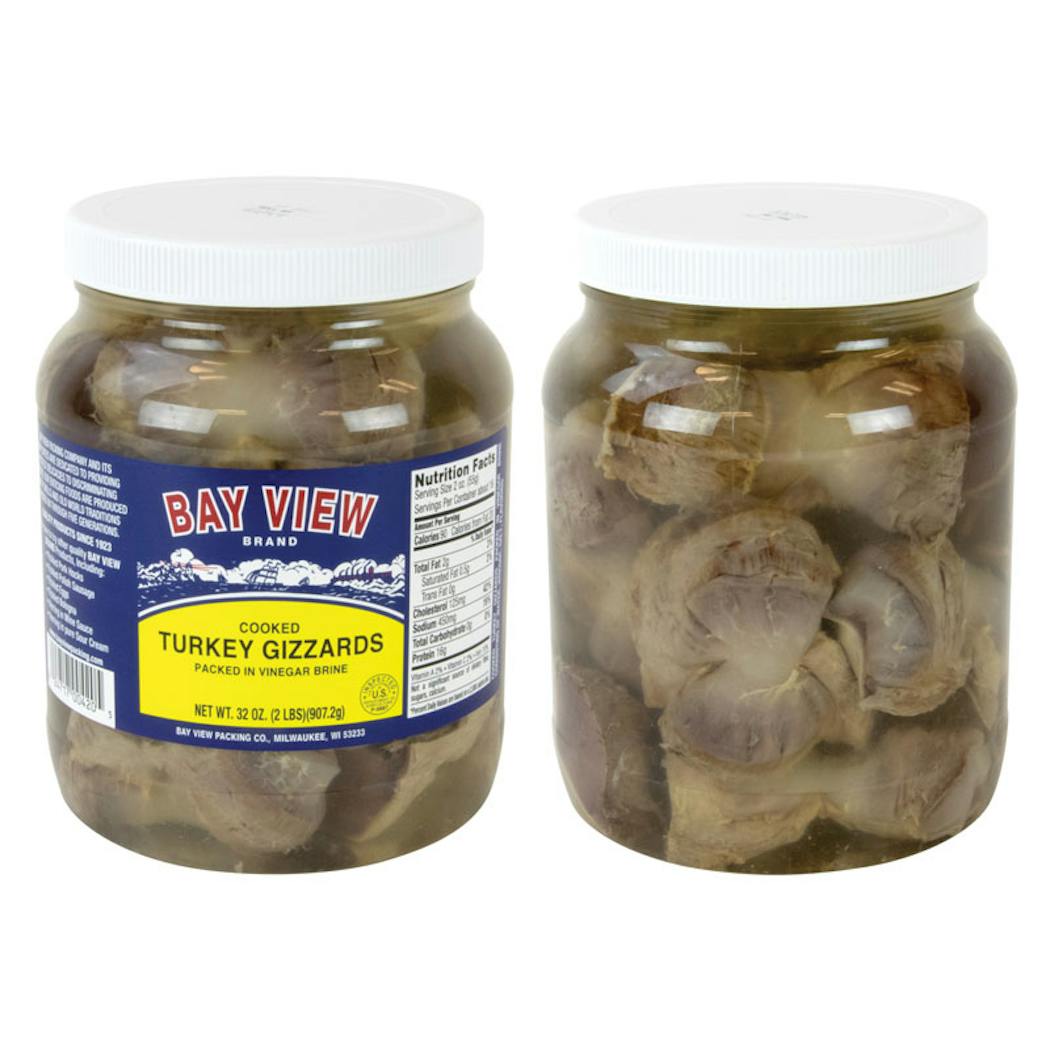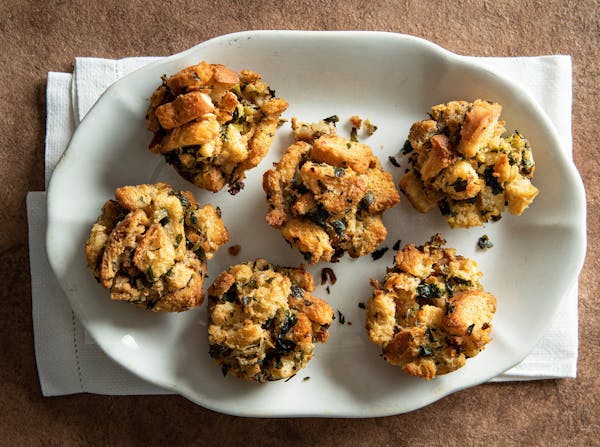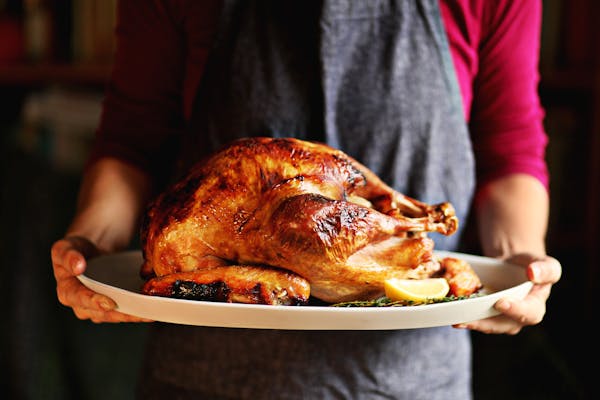If you're a new cook making a Thanksgiving turkey for the first time, you might be puzzled by what's inside the body cavity of your bird: strange little lumps of flesh, oddly shaped and, even odder, gift-wrapped in paper or plastic like something of value.
It's the humble yet clever giblets, which we now attempt to explain. Read on to learn what your turkey did with these bits and pieces, and why you might find them valuable, as well.
Even if you end up throwing them out, you'll learn all about turkey anatomy and poultry parts, which you can use as fodder for the inevitable small talk at your Thanksgiving table.
Of giblets and gizzards
First: giblets (pronounced "JIH-bluhts") is the general term used to describe the "edible offal" of a fowl, typically organs such as the heart, liver, gizzard and sometimes the kidneys. The detached, deskinned turkey neck, which you'll also find tucked inside the bird, is also often included in the catch-all term of giblets.
The heart, liver and neck, unsurprisingly, have a similar function in a bird as they do in a human. But the gizzard is something special. It's part of the digestive system, a muscular food-grinding organ that helps a bird such as a turkey to digest seeds and insects. It's also known as the gastric mill or hen's teeth, because it does what teeth would do — if birds had teeth.
A more scientific name for the organ is the ventriculus. But almost everyone just calls it the gizzard, said Prof. Rob Porter, an avian expert at the University of Minnesota College of Veterinary Medicine.
All birds have gizzards, but so do crocodiles, alligators, earthworms, some fish and crustaceans and even dinosaurs, according to the "8 Things You Didn't Know About Gizzards" page on the website for DeLong's Gizzard Equipment, a poultry processing equipment company in Macon, Ga.
Gizzards and other giblet parts can be simmered with herbs and vegetables to make stock. At Thanksgiving, the stock and minced-up giblets can be mixed with turkey pan drippings, flour and cream to make giblet gravy. Or they can be used to make giblet dressing. The strong-tasting liver, however, is most often roasted rather than boiled before being made into gravy or stuffing.
A Midwestern delicacy
Sometimes these extra bird parts are a star attraction of their own.
You can find recipes for smothered turkey necks, Southern smoked turkey necks, slow cooker turkey necks and curried turkey necks. The New York Times once published a recipe for turkey necks "osso buco style," braised slowly "until the flesh fell away from the bones in tender silky strands."
"There's a lot of muscle in that neck," Porter said.
And fried chicken gizzards are a traditional Southern dish.
"In Uganda, Cameroon, and Nigeria, the gizzard is traditionally set aside for the oldest and most respected male at the table," according to DeLong's.
But Wikipedia asserts that pickled turkey gizzards are a delicacy particular to the Midwest.
It's true, says Reinhard Liebner, owner of the Milwaukee-based Bay View Packing Co. Liebner said his company's pickled turkey gizzards sell well in Minnesota, where they can be found in taverns and grocery stores. They're especially popular among hunters, anglers, snowmobilers and football tailgaters, maybe because the jars of brine-soaked gizzards don't need refrigeration, even months after opening.
"It's convenient. It's ready to eat," Liebner said, and they taste like the dark meat of a turkey, except it's richer, with "more organ flavor. It's a delicacy," he said.
Other giblet gems
- A turkey with giblets includes a neck, gizzard, heart and liver, but probably not the ones the turkey had during its life. Turkey companies process hundreds of thousands of birds at a time, so it's pretty hard to keep straight whose neck was whose.
- If you put the turkey in the oven and forget to remove the giblets, it's not necessarily a disaster. Butterball turkeys, for one, package giblets in an oven-safe paper bag just in case. Butterball and Jennie-O also sell "oven ready" or "ready-to-roast" giblet-free whole frozen turkeys that can go straight into the oven inside a cook-in bag.
- The word gizzard comes from a Middle English word "giser," which evolved from the Latin word "gigeria," meaning giblets.
- Over the centuries, "giblets" has been used as a slang term for certain parts of the human body. To "join giblets" could mean having sex, shacking up or forming a partnership, according to Green's Dictionary of Slang. More recently, giblets has become slang for accessories that come with an electronic consumer product, according to the Urban Dictionary. And "gibbing" has become a gamer slang term derived from giblets that means to vanquish a digital foe in a way that scatters their body parts.
- In an episode of "The Beverly Hillbillies," Jethro starts a restaurant called the Happy Gizzard. And gizzard was a handy rhyming word for E.Y. "Yip" Harburg, the lyricist for the music for "The Wizard of Oz." If, as Dorothy sings, "the Wizard is a wizard who will serve," then the Cowardly Lion will become "brave as a blizzard," the Tin Man will be as "gentle as a lizard," and the Scarecrow will be "clever as a gizzard."
- Turkey neck has also become a term for an undesirable human condition: the wrinkled, sagging skin on a person's neck as one gets older. If you're developing a turkey neck, some suggested solutions include neck and facial exercises, cosmetic creams, Botox, plastic surgery — or wearing turtlenecks.

Review: Sibling pop band AJR put on a fun show in St. Paul, but not a good concert
Israelis grapple with how to celebrate Passover, a holiday about freedom, while many remain captive
A Georgia beach aims to disrupt Black students' spring bash after big crowds brought chaos in 2023
Today in History: April 18, San Francisco's great earthquake sets off fires, thousands die






